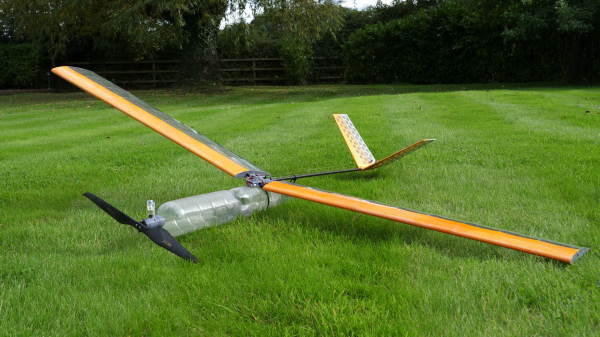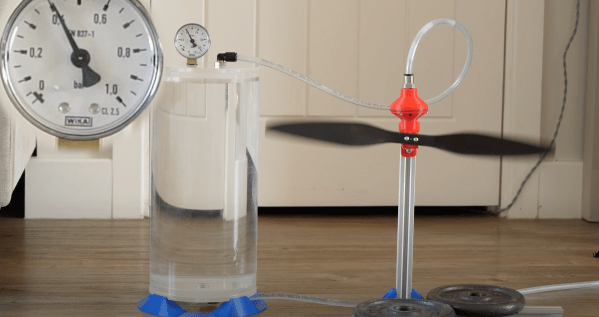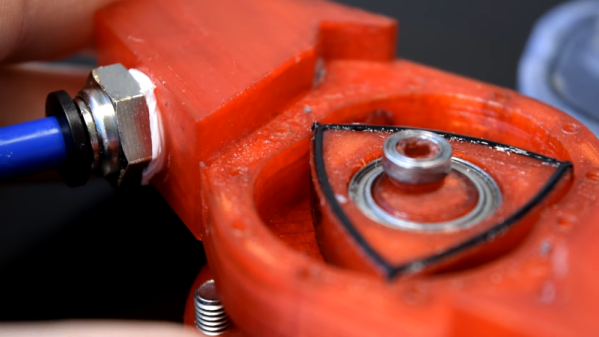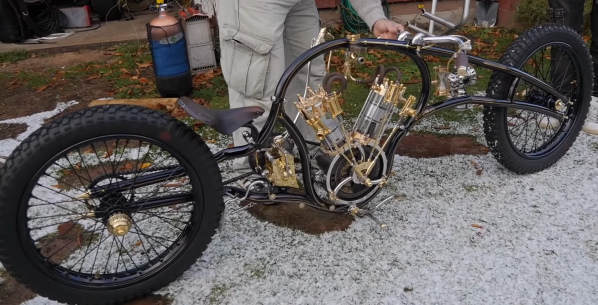[Tom Stanton] has been experimenting with compressed air motors on model aircraft for a good few years, but keeping them aloft (and intact) for more than a few seconds has proven a tough nut to crack. His latest design represents a breakthrough — pulling off an impressive 1 minute and 26 seconds flight on 4 liters of compressed air.
The model incorporates an enhanced engine design featuring an expanding seal on the piston, a concept inspired by the old Air Hogs toy plane. For the airframe, he constructed lightweight wings using 3D printed ABS ribs on a carbon spar and reinforcing rods, all of which were wrapped in heat shrink film. Additionally, [Tom] incorporated a thin balsa former along the leading edge of the wing to help maintain its shape. The fuselage is also composed of a carbon fiber tube, and is outfitted with printed fittings to install the wings, V-tail, RC electronics, and soda/air bottles. A hollow nylon bolt holds the two bottles together end-to-end while allowing the motor to be screwed directly onto the front bottle. To conserve weight, each of the two V-tail control surfaces are actuated by single cables linked to servos, with piano wire torsion springs in the hinges to maintain tension
Despite successful flights, [Tom]’s trials were not without challenges. One crash threatened severe damage to his airframe, but thanks to a central 3D printed bracket that absorbed most of the impact, total destruction was avoided. Similarly, a printed shaft saved his expensive carbon fiber propeller from being damaged during multiple landings, an outcome that led [Tom] to devise a readily replaceable consumable connector.
A second video after the break offers a behind-the-scenes insights into this project including some fascinating technical details. For more on this project’s history, take a look at the initial diaphragm engines and his attempts to make them fly.
Continue reading “Stretching The Flight Time On A Compressed Air Plane”

















